Posted by Garrott Kuzzy, Lumi Experiences on Sep 26th 2024
Discovering the Trellised Slopes of South Tyrol (and tasting their fruits in winter!)
Discovering the Trellised Slopes of South Tyrol (and tasting their fruits in winter!)
It’s harvest season in South Tyrol, also known as the Alto Adige region in northwestern Italy. If you’ve traveled on a Lumi trip to Cavalese or Seiser Alm, or if you’ve skied the Marcialonga (bookings for these January 2025 trips close next week!), do you remember traveling through a winding river valley and seeing neat rows of fruit growing up the hillsides all around? Decades ago, when I first took the train over the Brenner Pass and into South Tyrol, I assumed the trellised landscape was all vineyards. At that time, I was most familiar with South Tyrol from some of the region’s popular wine varieties like Lagrein, Pinot Grigio and Gewürztraminer.
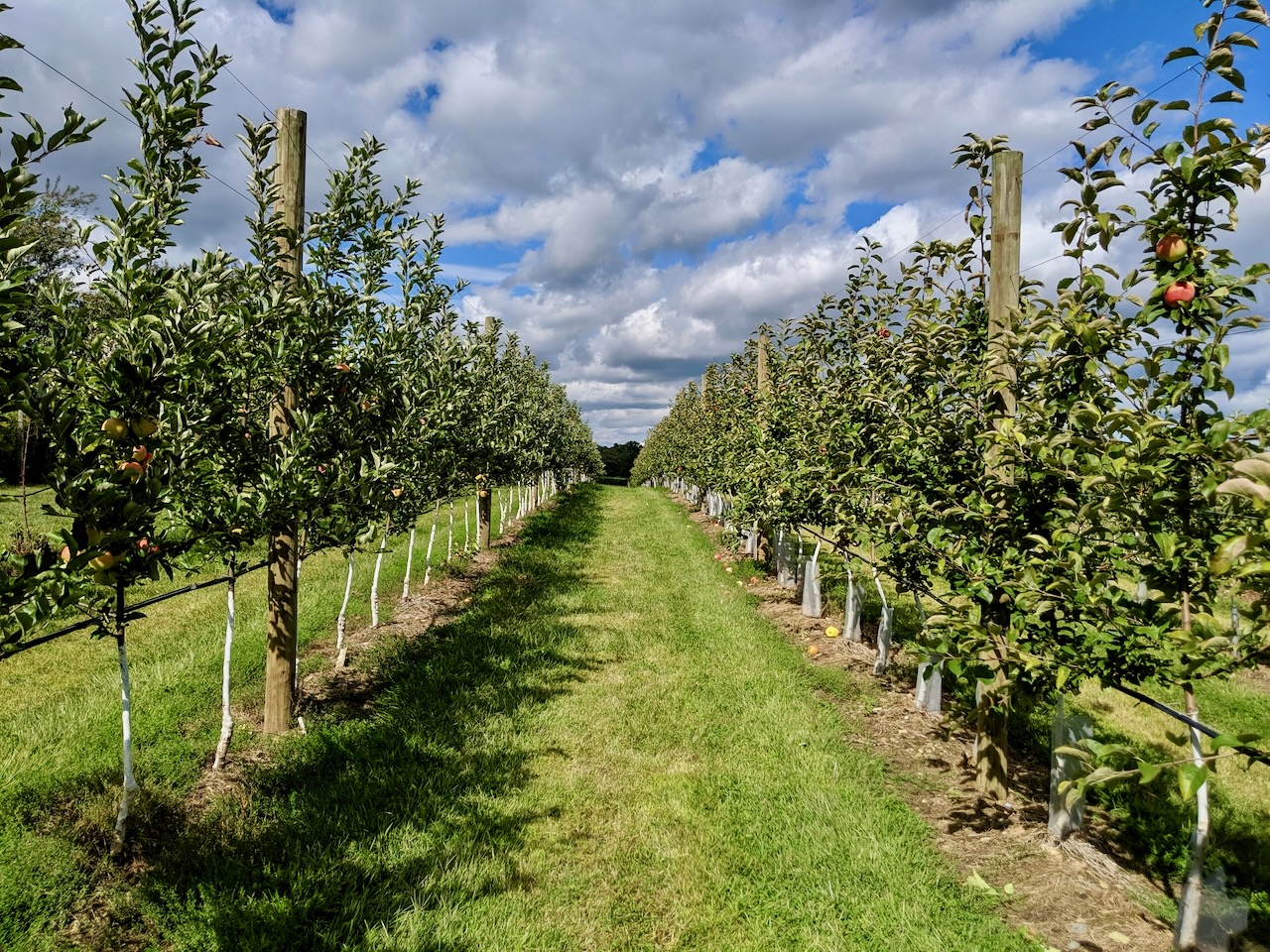
Interestingly, however, Alto Adige only produces around 1% of Italy’s wine, while it grows 50% of the country’s apples. I was surprised to learn that the countryside was actually filled with apple orchards. They didn’t look like the orchards I was used to seeing in Vermont’s Champlain Valley. I later learned that the vast majority of apple orchards in Italy – and Europe as a whole – use a trellis system. From afar, these trellised apple trees growing in horizontal lines up the slopes can look like vineyards to the untrained eye. In Vermont, only about 12% of the acres of apple trees are planted this way.
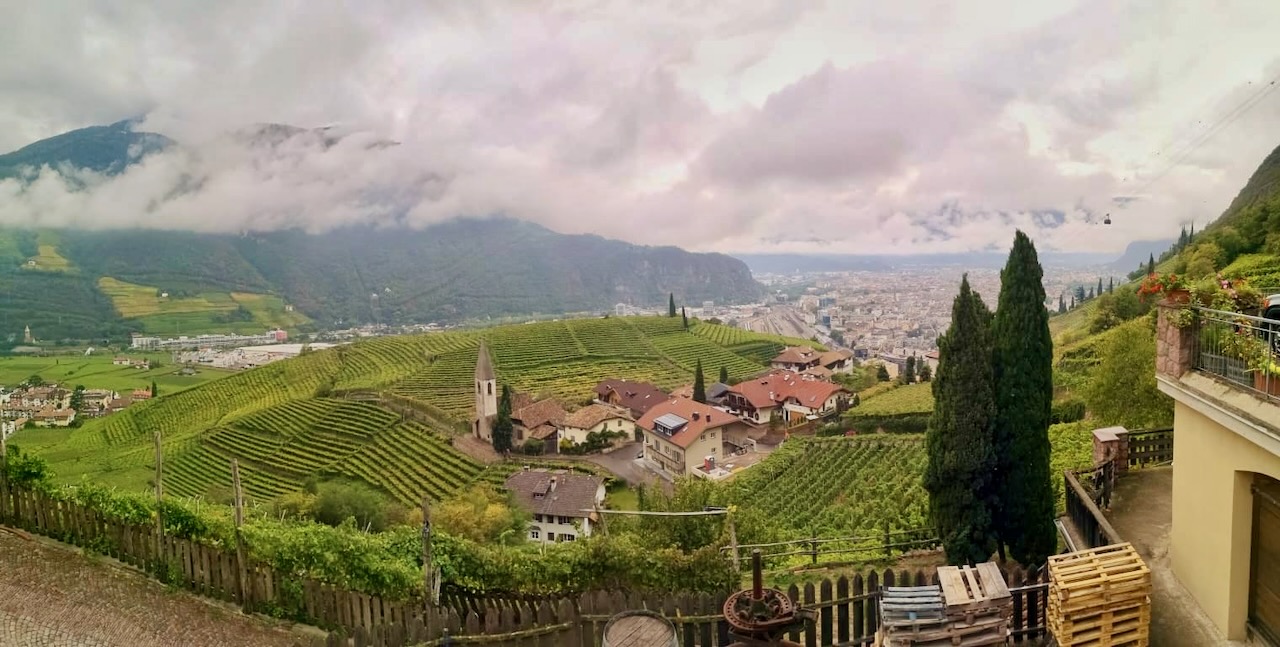
This summer, while hiking in Slovenia’s Julian Alps, I got to learn more about these high-density orchard systems from my friend who works in agriculture. Compared to a more traditional orchard like what you might find in Vermont or Wisconsin, trellised orchards can have on average 100 times the number of trees per acre (up to 2,000 / acre). The trees in these systems are smaller, which saves time and labor costs on pruning and picking. They also bear fruit in their 3rd instead of 7th year after their initial planting.
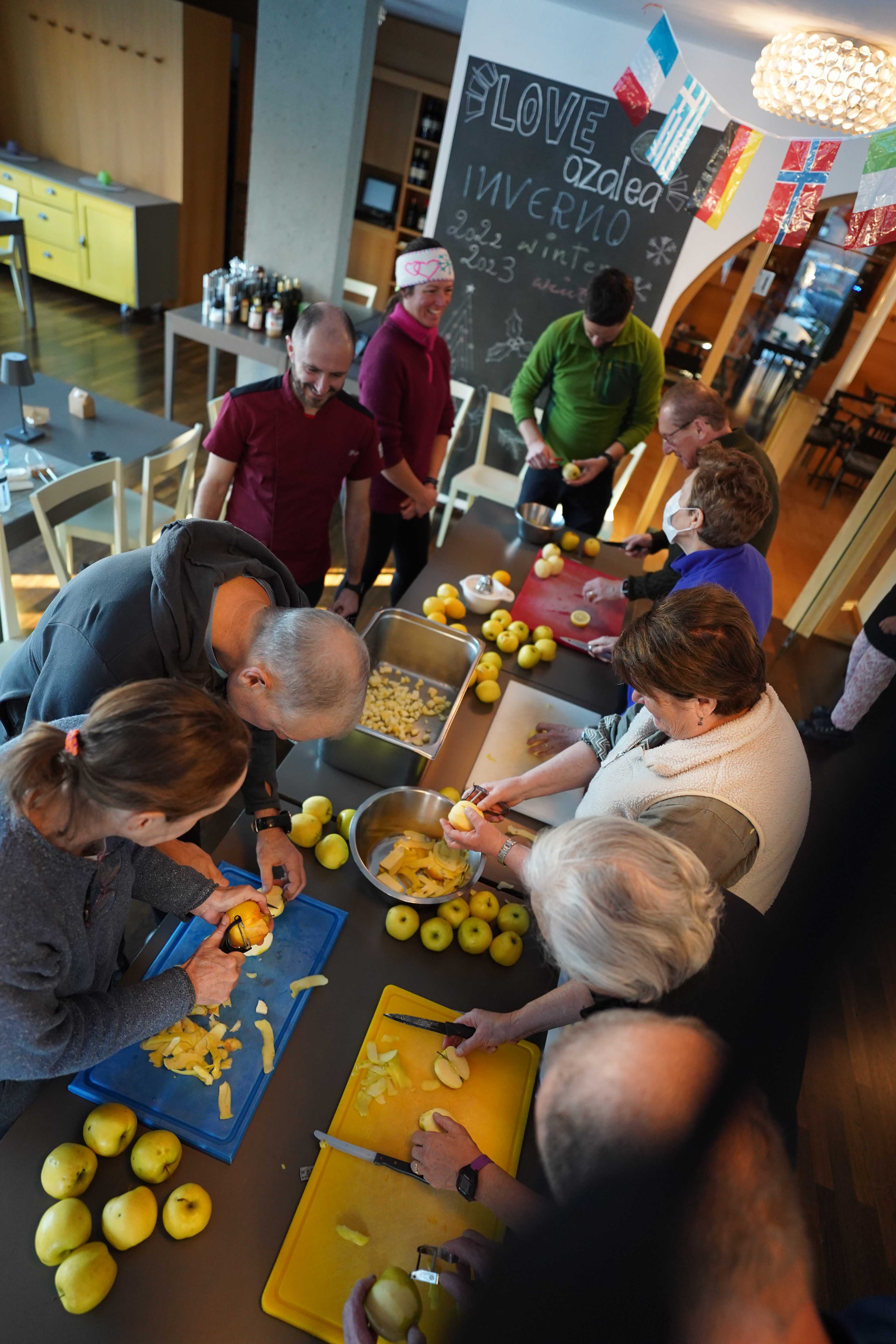
These smaller trees also allow for more sunlight and airflow, producing higher quality fruit, and in higher yields. Right now, during the harvest in South Tyrol, there are millions of ripe and colorful apples being plucked from the hillsides. Despite having high start-up costs, the high yields make for a much shorter return on investment for these trellised systems: roughly 4 to 6 years, instead of 12 to 15 for more traditional orchards. This is in part why they are widely adopted in Europe. More-and-more orchards in the U.S. are now being planted in trellis too.
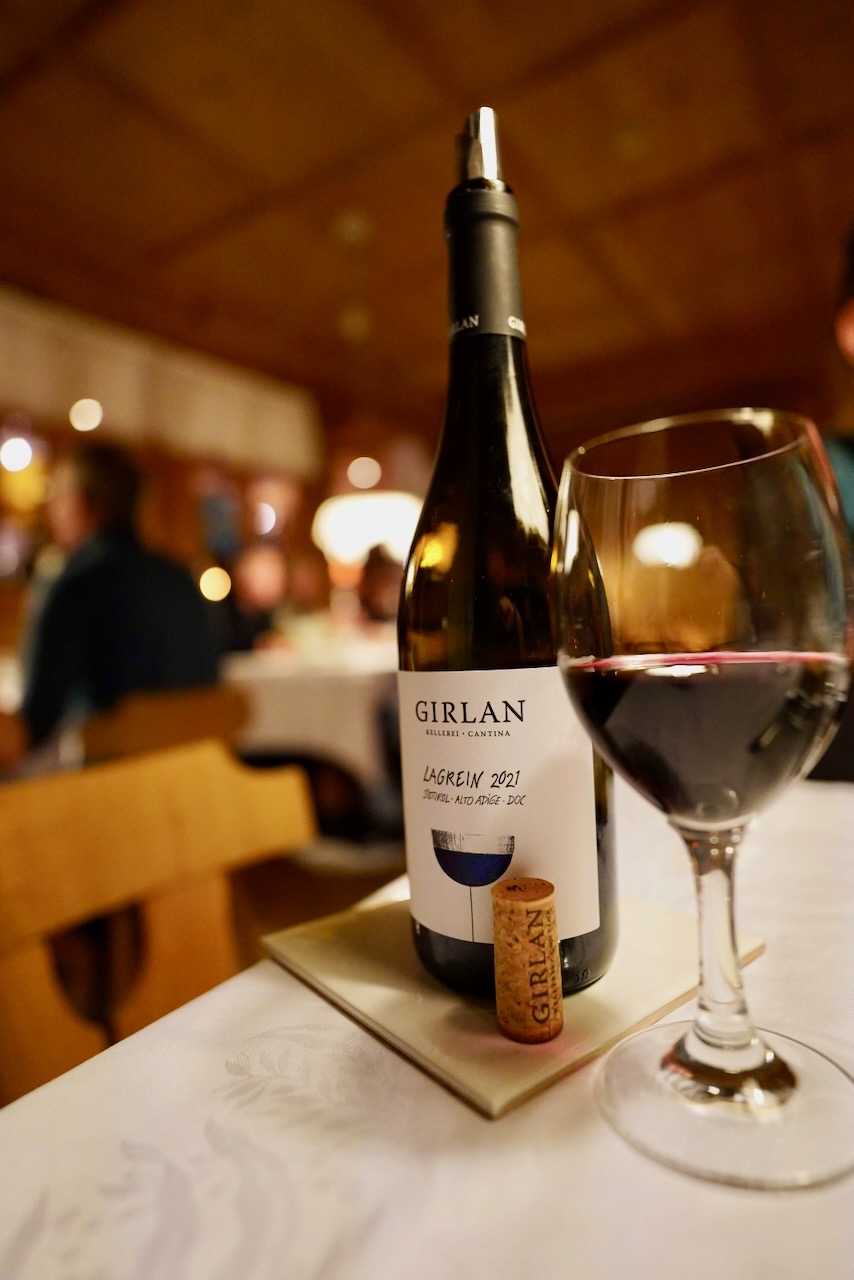
In addition to adopting efficient growing systems, it’s no accident that 50% of Italy’s apples come from the slopes lining the second longest river in the country. The Adige River – which runs high in the spring with snowmelt from places like Seiser Alm – is a key natural resource for the region’s agricultural industry. Throughout the growing season, snowmelt from the Italian Alps where we take skiers on Lumi trips in winter, is funneled into the river and used to irrigate the prolific apple trees lining the slopes all around.

Eventually, at higher elevations up to about 3,300 feet, the sloping apple orchards do give way to grapevines, so I wasn’t entirely amiss in my first impression. These steeply terraced vineyards are primarily south-facing in a region that is also blessed with over 300 sunny days a year (yes, it’s sunny here in winter too!). This intense sunlight ripens the grapes, even at the higher elevations where they’re planted, and the cool alpine nights contribute to the crispness associated with many wines from this region.
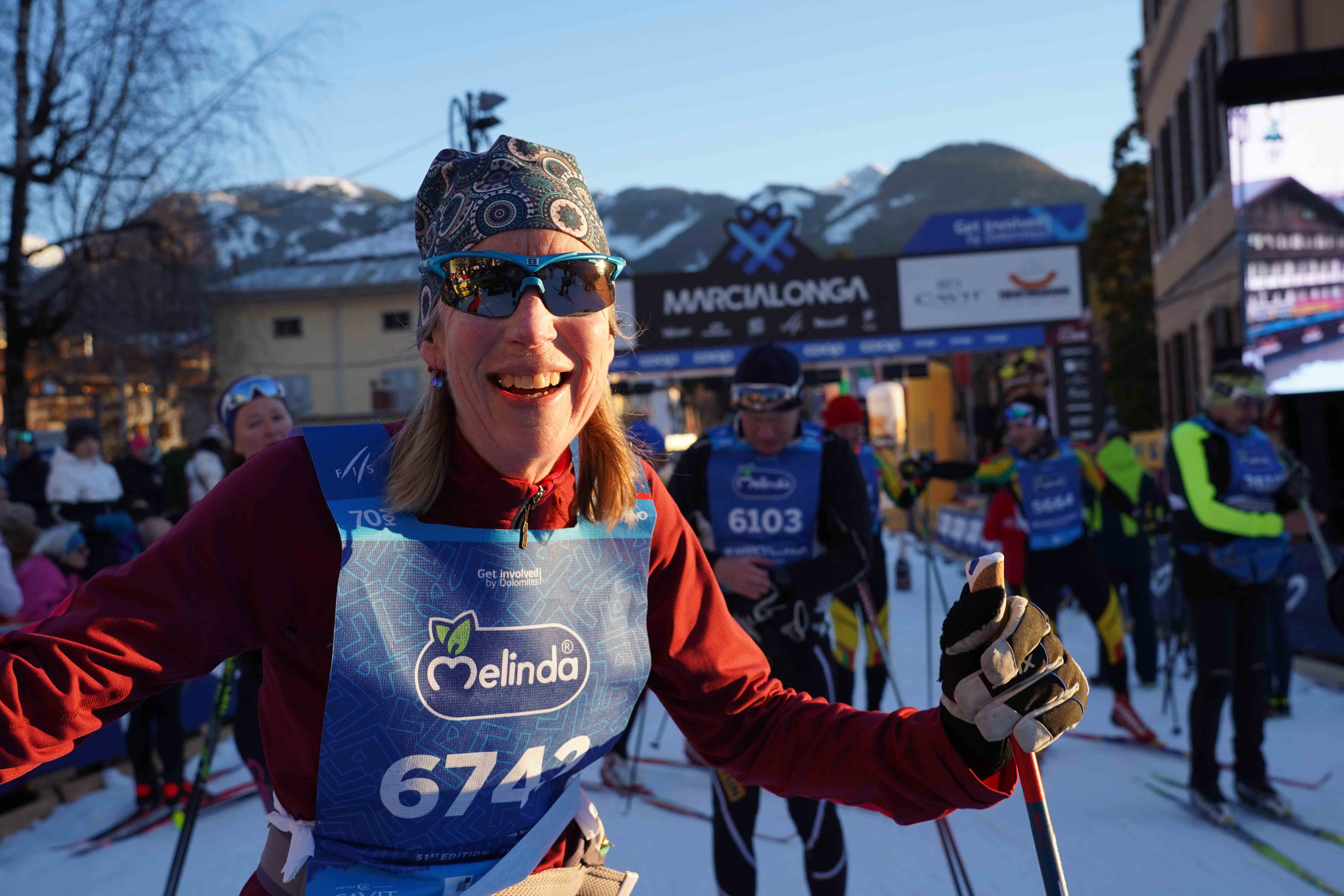
The hot sunshine here is particularly great for growing my personal favorite Alto Aidge wine – Lagrein, whose grapes are native to this region and rarely grown elsewhere. The Lagrein grape has both white and red varieties, but for a winter holiday in the Dolomites, I’d highly recommend trying the full-bodied red with some fresh Italian pasta – or perhaps a homemade apple strudel. Guests on Lumi trips to Cavalese, Italy learn to make strudel the Italian-way (with olive oil, rather than butter). Similar to the mixed slopes of apples and grapes across the landscape, it’s the blend of Austrian & Italian cuisines and cultures in this area that was once part of the Austro-Hungarian Empire that make it so special.
On Lumi’s Dolomitenlauf & Marcialonga, Marcialonga & King Ludwig, Tour de Ski and Seefeld & Seiser Alm trips – all departing in January 2025 – you can taste the fruits of the Alto Adige and South Tyrol region for yourself. Whether the incredibly popular, classic-only Italian ski race – the Marcialonga – is calling your name, you’d like to cheer for the world’s best cross-country skiers on one of the steepest (and cruelest) courses on the World Cup circuit, or you would simply like to ski some of the most scenic trails I’ve skied to cozy mountain huts for lunch and relax at your hotel spa in the afternoon, there’s a Lumi trip to northwestern Italy for everyone.
There’s only limited space available and we’re closing bookings for all of these January trips next week. Reach out by Tuesday, October 1 to receive the detailed trip itinerary and save your spot!
See you on the trail soon,
Garrott

